- Preparing Your Grapes for Spring
- 1. Prune Your Grape Vines
- 2. Clear the Area Around Your Vines
- 3. Check for Pests and Diseases
- 4. Mulch Around Your Vines
- 5. Provide Support for Your Vines
- 6. Apply Fertilizer
- 7. Monitor Watering
- Proper Vine Tying Techniques
- 1. Use Flexible Materials
- 2. Start Early
- 3. Secure to Support Structures
- 4. Allow for Growth
- 5. Encourage Air Circulation
- 6. Tie in a Gentle and Even Manner
- 7. Regularly Monitor and Adjust
- Understanding the Importance of Pruning
- Promotes Fruit Production
- Controls Vine Growth
- Aids in Disease Prevention
- Improves Grape Quality
- Pruning Methods for Healthy Grape Vines
- 1. Cane Pruning
- 2. Spur Pruning
- 3. Head Pruning
- 4. Pruning Young Vines
- 5. Additional Pruning Considerations
- The Benefits of Leaf Fertilization for Grapes
- 1. Enhanced Nutrient Uptake
- 2. Targeted Nutrient Delivery
- 3. Increased Disease Resistance
- 4. Improved Fruit Quality
- 5. Increased Yield
- Choosing the Right Fertilizer for Leaf Fertilization
- Nutrient Composition
- Solubility
- Fertilizer Form
- Timing
- Organic vs. Synthetic
- Applying Leaf Fertilization Techniques to Your Grape Vines
- Benefits of Leaf Fertilization
- Choosing the Right Fertilizer
- Application Techniques
- Timing and Frequency
- Monitoring and Adjusting
- Spring Care Checklist for Successful Grape Harvesting
- Tie Vines
- Prune Grapes
- Fertilize with Leaf Fertilizer
- Monitor Pests and Diseases
- Weed Control
- Monitor Watering
- Train New Shoots
- Protect from Late Spring Frosts
- Maintain Cleanliness
- Keep Records
- Question-answer:
- Why is spring care important for grapes?
- How should I tie my grape vines in spring?
- When should I prune my grape vines in spring?
- What are the benefits of leaf fertilization for grapes in spring?
- Which nutrients are important for grape vines in spring?
- How often should I fertilize grape vines with leaf fertilizers in spring?
- What are the potential diseases that can affect grape vines in spring?
- Video: How to Prune Grapes — Summer
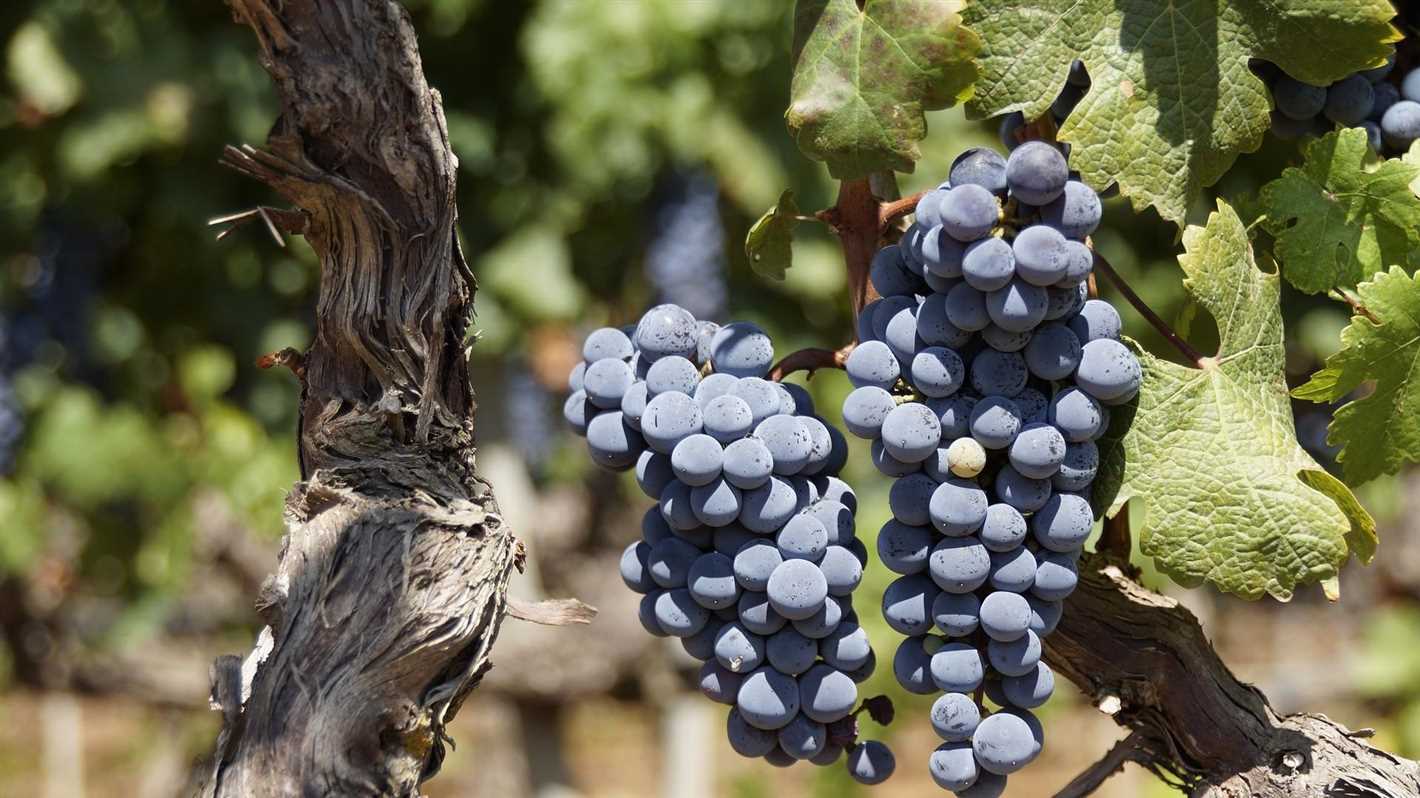
Grapes are a popular fruit and can be grown in many parts of the world. To ensure a successful harvest, it is important to provide proper care for grape vines throughout the year. Spring is a critical time for grape care, as it sets the stage for the growing season ahead. This article will focus on three key aspects of spring care for grapes: vine tying, pruning, and leaf fertilization.
Firstly, vine tying is an essential practice in spring care for grapes. As grape vines grow, they need support to keep them off the ground and allow for proper airflow and sunlight exposure. Tying the vines to a trellis, fence, or other support structure helps to train them in an organized manner. This practice also helps to maintain the overall health of the grape vines by reducing the risk of disease and promoting better fruit quality.
In addition to vine tying, pruning is another important task in spring care for grapes. Pruning involves the selective removal of certain parts of the vine, such as old wood, unwanted shoots, and excessive foliage. Proper pruning helps to improve air circulation and sunlight penetration, which are crucial for disease prevention and optimal grape development. It also helps to promote the growth of new, healthy shoots and clusters, ensuring a higher yield in the upcoming season.
Lastly, leaf fertilization is a technique that can greatly benefit grape vines in the spring. Leaves play a vital role in the photosynthesis process, providing energy for the plant’s growth and productivity. Applying foliar fertilizers directly to the leaves provides a quick and efficient way to supply essential nutrients to the vine. This method can help address any nutrient deficiencies or imbalances, ensuring that the grape vines have all the necessary resources to thrive and produce quality fruit.
In conclusion, spring care for grapes is crucial for setting the stage for a successful growing season. By practicing vine tying, pruning, and leaf fertilization, grape growers can ensure that their vines are well-supported, healthy, and receiving all the necessary nutrients for optimal growth and fruit production. Taking these steps in the spring will lay the foundation for a bountiful harvest in the months to come.
Preparing Your Grapes for Spring
As spring approaches, it’s time to start preparing your grape vines for the upcoming growing season. Taking the time to properly care for your grapes in the spring will ensure healthy growth and a bountiful harvest. Here are some important steps to follow:
1. Prune Your Grape Vines
One of the first tasks in preparing your grapes for spring is pruning. Pruning helps control the size and shape of your vines, as well as promote better air circulation and disease prevention. Remove any dead, damaged, or diseased wood, as well as any weak or overcrowded branches.
2. Clear the Area Around Your Vines
Clearing the area around your grape vines of weeds and debris is essential for allowing proper air flow and avoiding competition for nutrients. Remove any weeds or grass that may have grown around the base of your vines, and rake out any leaves or other debris.
3. Check for Pests and Diseases
Inspect your grape vines for any signs of pests or diseases. Look for holes or chew marks on the leaves, as well as discoloration or unusual growth. If you spot any issues, take appropriate measures to control or eliminate the problem, such as using organic pesticides or consulting with a professional.
4. Mulch Around Your Vines
Mulching around your grape vines helps conserve moisture, regulate soil temperature, and suppress weed growth. Apply a layer of organic mulch, such as wood chips or straw, around the base of your vines, taking care not to mound the mulch against the trunk.
5. Provide Support for Your Vines
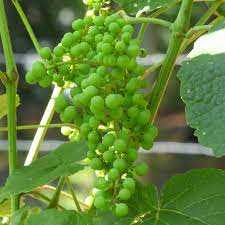

If you have grape vines that require support, such as trellises or wire systems, now is the time to set them up. Install or repair any necessary support structures to ensure that your vines have a strong foundation as they begin to grow.
6. Apply Fertilizer
Before the growing season begins, it’s a good idea to apply a balanced fertilizer specifically formulated for grapes. Follow the manufacturer’s instructions for application rates and timing. Fertilizing your vines will help provide the necessary nutrients for healthy growth and a successful harvest.
7. Monitor Watering
Throughout the spring, monitor the watering needs of your grape vines. They require consistent moisture, especially during dry spells. Water deeply and thoroughly, allowing the soil to dry out slightly between waterings. Avoid overwatering, as this can lead to root rot and other problems.
By following these steps to prepare your grapes for spring, you’ll be setting the stage for a successful growing season and a plentiful harvest of delicious grapes.
Proper Vine Tying Techniques
Vine tying is an essential practice in grape care, as it helps to train the vines and support their growth. Proper vine tying techniques ensure that the vines are properly supported and positioned for optimal fruit production. Here are some key points to consider when tying your grape vines:
1. Use Flexible Materials
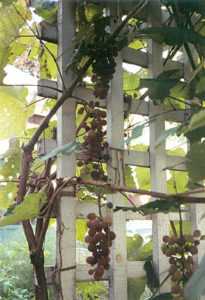

When tying grape vines, it is important to use flexible materials that will not damage or restrict the growth of the vines. Soft twine or garden wire are commonly used options that allow for some flexibility as the vines grow.
2. Start Early
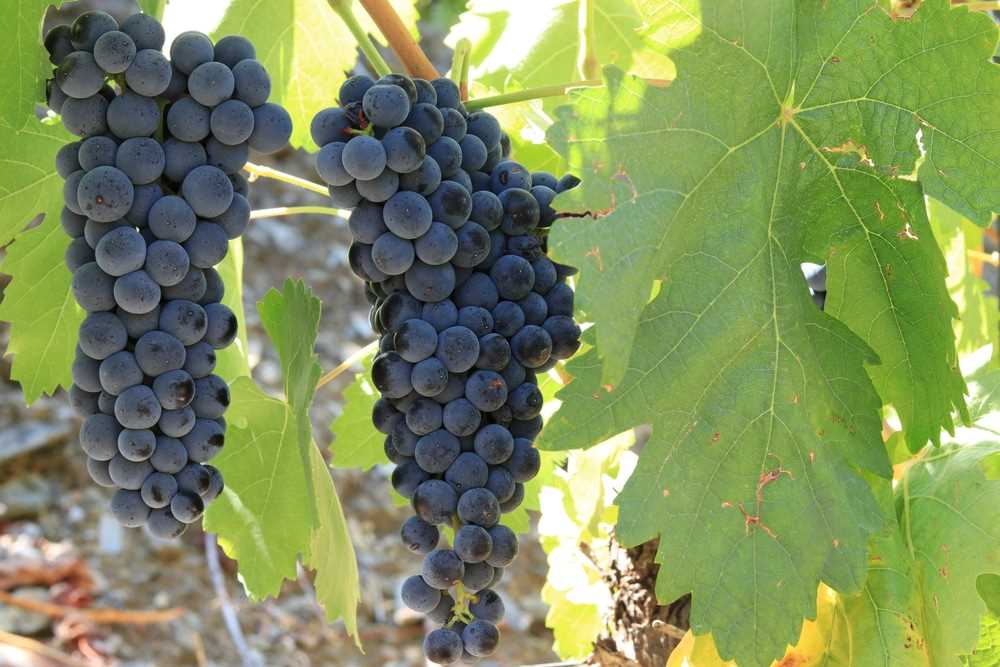

It is best to start tying your grape vines early in the growing season, when the vines are still young and flexible. This helps to guide the vines in the desired direction and prevents them from tangling or becoming misaligned.
3. Secure to Support Structures
Grape vines need to be securely attached to their support structures to prevent them from falling or getting damaged. This can be done by tying the vines to a trellis, stake, or other support system using knots or clips.
4. Allow for Growth
As the grape vines grow, it is important to regularly check and adjust the ties to prevent them from becoming tight and constricting the vines. Loosen or reposition the ties as needed to accommodate the growth of the vines.
5. Encourage Air Circulation
When tying grape vines, make sure to leave some space between the vines and the support structures to allow for proper air circulation. This helps to reduce the risk of diseases and promotes healthier vine growth.
6. Tie in a Gentle and Even Manner
Take care when tying grape vines to avoid causing any damage or stress to the vine. Gentle and even tying techniques help to prevent breakage and maintain the overall health of the plant.
7. Regularly Monitor and Adjust
Check your grape vines regularly throughout the growing season to ensure that the ties are holding up and that the vines are properly supported. Adjust the ties as needed to keep the vines in the desired position.
By following these proper vine tying techniques, you can effectively train and support your grape vines for successful growth and fruit production.
Understanding the Importance of Pruning
Pruning is a crucial step in the care of grape vines. It involves selectively removing parts of the vine, such as shoots, canes, and leaves, to improve the overall health and productivity of the plant. Here are some key reasons why pruning is important:
Promotes Fruit Production
Pruning helps stimulate the growth of new fruiting wood, which leads to increased grape production. By removing excess canes and shoots, the vine can focus its energy on producing high-quality fruit. Pruning also improves air circulation around the clusters, reducing the risk of disease and improving fruit quality.
Controls Vine Growth
Left unpruned, grape vines can become overgrown and unruly. Pruning helps control the size and shape of the plant, making it easier to manage and harvest. By removing excess growth, pruning allows the vine to allocate its resources more efficiently, leading to healthier growth and a better balance between foliage and fruit.
Aids in Disease Prevention
Pruning plays a critical role in preventing and managing diseases in grape vines. By removing old, diseased, or damaged wood, pruning helps eliminate potential sources of infection. It also opens up the canopy, allowing better air circulation and sunlight penetration, which can reduce the risk of fungal diseases.
Improves Grape Quality
Proper pruning techniques can help improve the overall quality of grapes. By thinning out the clusters and removing excess vegetation, pruning allows the remaining grapes to receive more nutrients and sunlight. This can result in better flavor, color, and sugar content in the grapes, leading to a higher-quality harvest.
In conclusion, pruning is a vital aspect of grape vine care, with numerous benefits for both the plant and the quality of the grapes it produces. By promoting fruit production, controlling growth, preventing diseases, and improving grape quality, pruning helps ensure the long-term health and productivity of the vineyard.
Pruning Methods for Healthy Grape Vines
Proper pruning is essential for maintaining healthy grape vines and maximizing fruit production. There are several pruning methods that can be used, depending on the type of grapevine and desired growth pattern.
1. Cane Pruning
Cane pruning is a common method used for many grape varieties. It involves selecting one to three canes from the previous year’s growth and removing all other growth. The selected canes are then tied to a support system and will produce grapes in the upcoming season. This method allows for easy management of the vine and encourages good air circulation and sunlight exposure.
2. Spur Pruning
Spur pruning is another common method used for grapevines, especially those trained on arbors or trellises. With this method, short sections of the previous year’s growth, called spurs, are left on the main trunk or along the canes. These spurs are typically 2-3 buds long and will produce fruit in the upcoming season. Spur pruning is often used for table grape varieties and can create a dense canopy for shade.
3. Head Pruning
Head pruning is commonly used for older grapevines or those with a thick trunk. It involves cutting the main trunk back to a certain height, usually around 2-3 feet above the ground. This method encourages new shoots to grow from the trunk, which can be trained to a trellis or support system. Head pruning is a good method for rejuvenating neglected grapevines and promoting new growth.
4. Pruning Young Vines
Young grapevines require special pruning to establish a strong framework for future growth. The main objective is to encourage the development of a sturdy trunk and a few well-placed canes. This involves removing any unwanted shoots and training the remaining ones to a support system. It is important to prune young vines regularly during their first few years to shape them properly.
5. Additional Pruning Considerations
When pruning grapevines, it is important to consider the specific requirements of the grape variety and its growth habit. Some varieties may require more aggressive pruning to maintain their desired shape, while others may need minimal pruning. It is also important to prune during the dormant season, typically in late winter or early spring, to avoid damaging the vines or interfering with fruit production.
Overall, proper pruning techniques are crucial for maintaining healthy grapevines and ensuring optimal fruit production. By selecting the appropriate pruning method and following proper pruning guidelines, grape growers can enjoy a bountiful harvest and healthy vines for years to come.
The Benefits of Leaf Fertilization for Grapes
Leaf fertilization is an essential practice for grape growers, as it provides numerous benefits to the overall health and productivity of the vines. By directly applying fertilizers to the leaves, the nutrients are quickly absorbed by the plant, allowing for a more efficient uptake compared to traditional soil fertilization methods.
1. Enhanced Nutrient Uptake
When fertilizers are applied to the leaves, they bypass the soil and are directly absorbed by the plant’s leaves. This allows for a faster and more efficient uptake of nutrients, as the leaf surface provides a larger and more receptive area for absorption. In turn, this leads to faster growth and improved overall plant health.
2. Targeted Nutrient Delivery
Leaf fertilization allows for targeted nutrient delivery, as growers can choose specific fertilizers to address any nutrient deficiencies or imbalances in the plants. This method of fertilization ensures that the correct nutrients are delivered directly to the plant, minimizing waste and maximizing the effectiveness of the fertilization process.
3. Increased Disease Resistance
A well-nourished grapevine is more resistant to diseases and pests. Leaf fertilization provides a quick and effective way to supply essential nutrients to the plants, helping them build up their natural defenses against diseases. By maintaining optimal nutrient levels, the vines can better resist various diseases and recover more quickly from any damage they may sustain.
4. Improved Fruit Quality
Leaf fertilization plays a crucial role in improving the quality of grapes. The direct application of nutrients to the leaves ensures that they are readily available to the developing fruit. Adequate levels of essential nutrients, such as nitrogen, phosphorus, and potassium, contribute to larger, healthier, and more flavorful grapes.
5. Increased Yield


Leaf fertilization can positively impact grape yield. By supplying optimal levels of nutrients, the vines are better equipped to produce a larger quantity of high-quality fruit. Improved nutrient availability promotes better flower development, pollination, and fruit set, ultimately leading to increased yields.
| Benefit | Explanation |
|---|---|
| Enhanced Nutrient Uptake | Faster and more efficient absorption of nutrients |
| Targeted Nutrient Delivery | Specific nutrients can be delivered to address deficiencies |
| Increased Disease Resistance | Better ability to resist diseases and recover from damage |
| Improved Fruit Quality | Larger, healthier, and more flavorful grapes |
| Increased Yield | Higher quantity of high-quality fruit |
Choosing the Right Fertilizer for Leaf Fertilization
Leaf fertilization is an important aspect of caring for grapevines during the spring season. By providing essential nutrients directly to the leaves, you can promote healthy growth and development. Choosing the right fertilizer for leaf fertilization is crucial for ensuring optimal results. Here are a few factors to consider when selecting a fertilizer:
Nutrient Composition
Look for a fertilizer that contains a balanced ratio of essential nutrients such as nitrogen, phosphorus, and potassium (NPK). Nitrogen plays a crucial role in promoting leaf and stem growth, phosphorus contributes to root development and flower formation, and potassium helps in overall plant health and disease resistance. Make sure the fertilizer you choose has an appropriate balance of these nutrients to meet the specific needs of your grapevines.
Solubility
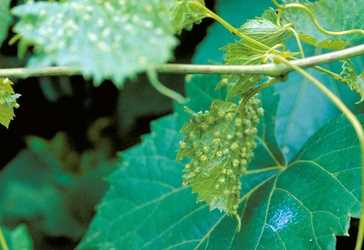

Choose a fertilizer that is highly soluble in water. This allows the nutrients to be readily absorbed by the leaves when applied as a foliar spray. Water-soluble fertilizers are usually more effective in delivering nutrients to the plants quickly and efficiently.
Fertilizer Form
Fertilizers come in various forms such as liquids, powders, and granules. For leaf fertilization, liquid fertilizers are often preferred as they can be easily sprayed onto the leaves for direct absorption. Additionally, liquid fertilizers can be mixed with other foliar treatments, such as insecticides or fungicides, for convenience.
Timing
Consider the timing of leaf fertilization when choosing a fertilizer. Spring is an ideal time for leaf fertilization as the leaves are actively growing and can readily absorb nutrients. Look for fertilizers that are specifically formulated for spring application to ensure the best results.
Organic vs. Synthetic
You may also want to consider whether to use an organic or synthetic fertilizer for leaf fertilization. Organic fertilizers are derived from natural sources and can improve soil health and sustainability. Synthetic fertilizers, on the other hand, are manufactured using artificial compounds and provide a more concentrated dose of nutrients. Choose the type of fertilizer that aligns with your gardening practices and preferences.
Remember, it’s important to carefully follow the instructions provided by the fertilizer manufacturer for application rates and methods. By selecting the right fertilizer for leaf fertilization, you can support the growth and health of your grapevines, resulting in a bountiful harvest.
Applying Leaf Fertilization Techniques to Your Grape Vines
Grapes vines require proper nutrition in order to produce healthy and abundant fruit. One effective way to provide essential nutrients to your grape vines is through leaf fertilization. Leaf fertilization involves applying fertilizer directly to the leaves, where it can be absorbed and utilized by the plant.
Benefits of Leaf Fertilization
- Improved nutrient uptake: By applying fertilizer directly to the leaves, the nutrients can be rapidly absorbed and utilized by the grape vines.
- Enhanced nutrient efficiency: Leaf fertilization allows for more targeted nutrient delivery, reducing the risk of nutrient loss through leaching or volatilization.
- Promotes vigorous growth: Adequate nutrient supply through leaf fertilization can stimulate the growth of grape vines, resulting in stronger and healthier plants.
Choosing the Right Fertilizer
When selecting a fertilizer for leaf fertilization, it is important to choose a product that is specifically formulated for foliar application. These fertilizers are designed to be easily absorbed by the leaves and provide the necessary nutrients in a form that can be readily utilized by the grape vines.
Look for a fertilizer with a balanced blend of macronutrients such as nitrogen, phosphorus, and potassium, as well as essential micronutrients like iron, manganese, and zinc. These nutrients are crucial for the overall health and development of the grape vines.
Application Techniques
There are several techniques for applying fertilizers to the leaves of grape vines. Here are a few common methods:
- Spray application: Mix the fertilizer with water according to the manufacturer’s instructions and use a sprayer to evenly coat the leaves. Be sure to spray both sides of the leaves to ensure thorough coverage.
- Drench application: Dilute the fertilizer in water and pour it directly onto the leaves, allowing the solution to soak in. This method is particularly effective for smaller grape vineyards or potted plants.
Timing and Frequency
The timing and frequency of leaf fertilization can vary depending on the specific needs of your grape vines and the fertilizer used. It is generally recommended to apply leaf fertilizer during periods of active growth, such as early spring and summer.
Be sure to follow the instructions provided by the fertilizer manufacturer for the proper application rate and frequency. Over-fertilization can lead to nutrient imbalances and potential damage to the grape vines.
Monitoring and Adjusting
Regular monitoring of your grape vines is crucial to ensure they are receiving the correct nutrients. Observe the plants for any signs of nutrient deficiencies or excesses, such as yellowing leaves or stunted growth.
If necessary, adjust the fertilizer application rates or switch to a different fertilizer formulation to address any deficiencies or imbalances. Consult with a local agricultural extension or grape vine specialist for personalized recommendations based on your specific growing conditions and grape varieties.
Spring Care Checklist for Successful Grape Harvesting
Tie Vines
One of the first tasks in spring care for grapes is to tie the vines to their support structures. Start by examining the vines and removing any old or damaged ties. Then, gently guide the new growth of the vine along the trellis system, being careful not to snap or damage the branches.
Prune Grapes
Pruning is a vital step in maintaining healthy grape vines and ensuring a successful harvest. As spring begins, carefully prune away any dead or diseased wood, as well as any excess growth. This helps to improve air circulation and promotes the growth of new, fruitful canes.
Fertilize with Leaf Fertilizer
Leaf fertilizer is a key component of spring care for grapes. Apply a balanced leaf fertilizer around the base of the grapevine, taking care not to oversaturate the soil. This provides important nutrients to support the growth and development of the vine.
Monitor Pests and Diseases
Regularly inspect the grapevines for signs of pests or diseases. Look for common issues such as powdery mildew, aphids, or grapevine leafhoppers. If any problems are detected, take immediate action to prevent the spread and minimize damage to the plants.
Weed Control
Keep the area around the grapevines free from weeds. Weeds compete with the vines for nutrients and water, and can negatively impact the growth and yield of the grapes. Regularly remove any weeds that appear near the base of the vines.
Monitor Watering
Ensure that the grapevines are receiving adequate water during the spring season. Monitor the soil moisture levels and adjust watering as needed. It is important to keep the soil consistently moist but not waterlogged, as this can lead to root rot and other issues.
Train New Shoots
Train and guide new shoots as they emerge from the grapevine. Position them along the trellis or support system, using clips or ties to secure them in place. This helps to improve air circulation and sunlight exposure, which are both important for healthy grape development.
Protect from Late Spring Frosts
Keep an eye on the weather forecast for late spring frosts. If frost is predicted, take steps to protect the grapevines by covering them with frost blankets or cloths. This can help prevent damage to the new growth and protect the developing grape clusters.
Maintain Cleanliness
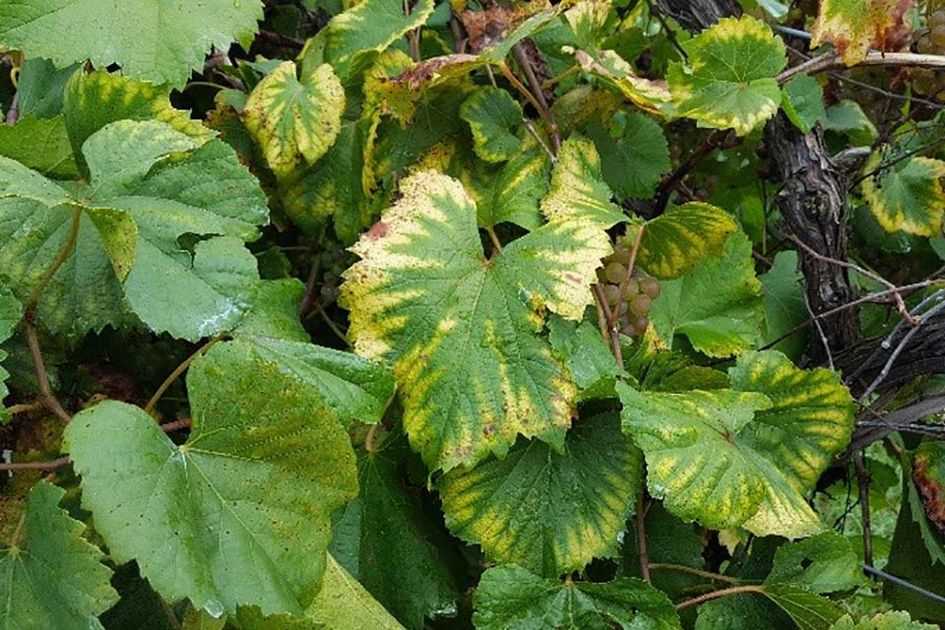

Regularly clean up any fallen leaves, debris, or pruned branches from around the grapevines. This helps to prevent the spread of disease and keeps the area neat and tidy.
Keep Records
Maintain a record of the spring care tasks performed on the grapevines. This can help with future planning and ensure that all necessary maintenance steps are completed each year.
Question-answer:
Why is spring care important for grapes?
Spring care is important for grapes because it is the time when they start their growth cycle. Proper care in spring helps in establishing a strong and healthy vine, promotes fruiting and prevents diseases.
How should I tie my grape vines in spring?
Grape vines should be tied in spring using soft twine or specially-designed vine ties. The vines should be tied to a trellis or support system to encourage them to grow vertically and prevent them from tangling or trailing on the ground.
When should I prune my grape vines in spring?
Grape vines should be pruned in late winter or early spring while they are still dormant. Pruning at this time helps to control the size of the vine, improve air circulation and light penetration, and stimulate the growth of new fruiting wood.
What are the benefits of leaf fertilization for grapes in spring?
Leaf fertilization provides nutrients directly to the vines through the leaves, bypassing the root system. This helps in making the nutrients readily available to the vine during the crucial growth period in spring, resulting in healthier foliage, better fruit set, and improved yields.
Which nutrients are important for grape vines in spring?
Grape vines require various nutrients in spring, but some of the most important ones include nitrogen, potassium, phosphorus, and magnesium. These nutrients support the growth of the vine, promote fruiting, and contribute to overall vine health.
How often should I fertilize grape vines with leaf fertilizers in spring?
The frequency of leaf fertilization for grape vines in spring depends on the specific product and its instructions. Generally, it is recommended to apply leaf fertilizers every 2-4 weeks during the active growth period, ensuring that the vines receive a steady supply of nutrients throughout the spring season.
What are the potential diseases that can affect grape vines in spring?
Grape vines can be susceptible to diseases such as powdery mildew, downy mildew, black rot, and botrytis bunch rot. It is important to monitor the vines regularly and take preventive measures such as proper pruning, ensuring good air circulation, and timely application of fungicides to prevent or control these diseases.







